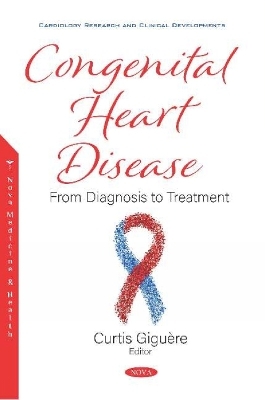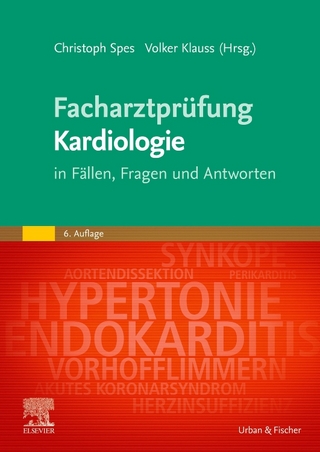
Congenital Heart Disease
From Diagnosis to Treatment
Seiten
2019
Nova Science Publishers Inc (Verlag)
978-1-5361-6674-3 (ISBN)
Nova Science Publishers Inc (Verlag)
978-1-5361-6674-3 (ISBN)
This book opens with a review of the most common forms of congenital heart disease in pregnancy, outlines preconception counselling, discusses the associated morbidity and mortality of each lesion, and reviews current recommendations for the management of congenital heart disease in pregnancy. Women with congenital heart disease represent over 50% of patients with cardiac disease in pregnancy today. Formerly characterised by high rates of maternal morbidity and mortality, the authors explore how advancements in medical management and surgical intervention are responsible for increasing numbers of women with congenital heart defects experiencing safe and successful pregnancies. Additionally, the authors discuss cardiac resynchronization therapy in adults with congenital heart disease. Treatment in the setting of heart failure is challenging due to heterogeneity of the underlying anatomy and physiology, surgical scars, residual shunts and valvular dysfunction. Since donor hearts are scarce, worldwide interest has increased for the application of cardiac resynchronization therapy in this relatively young population. This compilation goes on to discuss the four different types of atrial septal defects, categorized based on location and embryological development. While bicuspid aortic valve is the most common congenital heart anomaly in adults, atrial septal defects are not far behind, accounting for 10-15% of congenital heart disease. In the penultimate study, the authors focus on the state of the liver in children with congenital heart disease and chronic heart failure. Congenital heart disease represented: ventricular septal defect -- in 26,7% of patients, secondary atrial septal defect -- in 24,4% of children, a double discharge of the main vessels of the right ventricle -- in 15,6% of patients, common atrioventricular canal -- at 15,6% of children, tetralogy of Fallot -- at 11,1% of patients, etc. The concluding study reviews the effects of high altitude effects on congenital heart disease in the Andean region, and in Ecuador as a study case. High-altitude hypoxia presents numerous challenges to human health, survival, and reproduction because of decreased oxygen availability brought on by lowered barometric pressure at high elevations.
Preface; Congenital Heart Disease and Pregnancy; Pregnancy Considerations in Women with Congenital Heart Disease; Cardiac Resynchronization Therapy in Adults with Congenital Heart Disease: Current State and Future Perspectives; Types, Presentation, and Management of Atrial Septal Defects in Adults; State of the Liver in Children with Congenital Heart Disease; High Altitude and Congenital Heart Disease in Andean Highlands Populations: The Case of Ecuador; Index.
| Erscheinungsdatum | 14.01.2020 |
|---|---|
| Verlagsort | New York |
| Sprache | englisch |
| Maße | 155 x 230 mm |
| Gewicht | 288 g |
| Themenwelt | Medizinische Fachgebiete ► Innere Medizin ► Kardiologie / Angiologie |
| ISBN-10 | 1-5361-6674-X / 153616674X |
| ISBN-13 | 978-1-5361-6674-3 / 9781536166743 |
| Zustand | Neuware |
| Haben Sie eine Frage zum Produkt? |
Mehr entdecken
aus dem Bereich
aus dem Bereich
in Fällen, Fragen und Antworten
Buch | Softcover (2024)
Urban & Fischer in Elsevier (Verlag)
89,00 €
Diagnostik und interventionelle Therapie | 2 Bände
Buch (2024)
Deutscher Ärzteverlag
349,99 €


